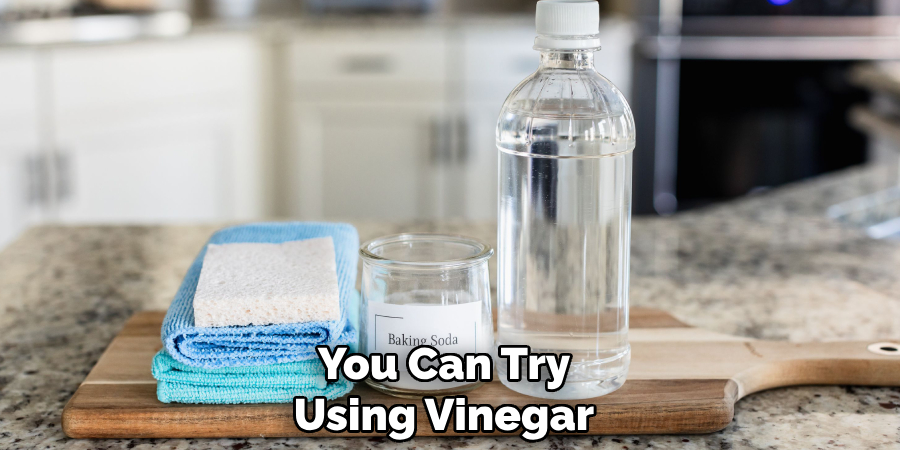There are a number of reasons why you should learn how to fix a sticky steering wheel. First and foremost, it can save you from potential accidents caused by a lack of control over your vehicle. A sticky steering wheel may cause unexpected movements or difficulty in turning, which can lead to collisions or other dangerous situations on the road.

The main advantage of knowing how to fix a sticky steering wheel is that you can save yourself from potential accidents caused by having limited control over the vehicle. A sticky steering wheel can make it difficult to turn, which means that you might not be able to maneuver your car in time to avoid an oncoming obstacle or another vehicle. In this blog post, You will learn in detail how to fix sticky steering wheel.
Step-by-step Instructions for How to Fix Sticky Steering Wheel
Step 1: Inspect the Steering Wheel
The first thing to do when you notice your steering wheel getting sticky is to inspect it for any visible signs of damage. Check for peeling or cracking on the surface as well as any dirt or debris that may have accumulated. This will help you determine the extent of the problem and what steps to take next.
Step 2: Clean with Soap and Water
If the steering wheel is just dirty and not damaged, you can start by cleaning it with soap and water. Use a mild detergent to gently scrub the surface of the wheel and remove any dirt or grime. Rinse thoroughly with clean water and dry with a soft cloth.
For more stubborn stains or sticky residue, you can use isopropyl alcohol to clean the steering wheel. Dampen a cloth with the alcohol and gently rub it on the affected areas. This should help break down any sticky residue and make it easier to clean off.
Step 3: Try Vinegar
If isopropyl alcohol doesn’t do the trick, you can try using vinegar as an alternative. Mix equal parts of white vinegar and water, and use a cloth dampened with the solution to clean the steering wheel. The acidity in vinegar can help remove sticky residue without damaging the surface.

If your steering wheel is extremely sticky, you may need to use a degreaser for more effective cleaning. Be sure to choose a degreaser that is safe for use on car interiors and follow the instructions on the label.
Step 4: Apply a Leather Conditioner
If your steering wheel is made of leather, it’s important to replenish its moisture after cleaning. Use a leather conditioner to prevent the leather from drying out and cracking. Gently rub the conditioner onto the surface of the wheel and let it sit for a few minutes before wiping off any excess.
For severely sticky steering wheels, you may need to sand them to remove any built-up residue. Use fine-grit sandpaper and gently rub it on the surface of the wheel in a circular motion. This will help smooth out any rough spots and remove stubborn residue.
Step 5: Apply a New Coat of Paint
If your steering wheel has been sanded down, you may need to apply a new coat of paint or finish to restore its appearance. Use a spray can or brush to apply the paint evenly and let it dry completely before using the steering wheel again.
If all else fails and your steering wheel is still sticky, it may be time to seek professional help. A mechanic or auto body shop can assess the damage and provide a more permanent solution for fixing your sticky steering wheel.
Step 6: Prevent Future Sticky Steering Wheels
To avoid dealing with a sticky steering wheel in the future, make sure to regularly clean and condition it. Avoid eating or drinking in the car, as spills and crumbs can contribute to a sticky wheel. Also, be sure to park in shaded areas to prevent sun damage and cracking on the steering wheel’s surface.
By following these steps, you can easily fix a sticky steering wheel and keep it looking and feeling smooth for a more enjoyable driving experience. Remember to regularly maintain your vehicle’s interior to prevent any future issues with your steering wheel.

Tips for How to Fix Sticky Steering Wheel
- Park your vehicle in a safe, secure location before working on the steering wheel.
- Disconnect the negative battery terminal to avoid any electrical shock and damage to your vehicle.
- Wear protective gear such as gloves and safety glasses to prevent injuries.
- Use specialized cleaners or lubricants specifically designed for steering wheels to avoid damaging the material.
- Do not use excessive force or sharp tools while cleaning or fixing the steering wheel to avoid causing more damage.
- Consult a professional mechanic if you are unsure about how to fix the issue or if it requires complicated repairs.
- Test the steering wheel after fixing it to ensure that it moves smoothly and without any issues before driving again.
What Causes a Sticky Steering Wheel?
Having a sticky steering wheel can be a frustrating and potentially dangerous problem for drivers. It can make it difficult to control the direction of your vehicle, especially in emergency situations.
1. Dirt and Debris Buildup
Over time, dirt, dust, and other debris can get trapped in the crevices of your steering wheel. This buildup can cause the wheel to become sticky and difficult to turn.
2. Worn Out or Damaged Components
The various components that make up your steering system, such as the ball joints and tie rods, can wear down over time. When they become worn out or damaged, it can lead to a stiff and sticky steering wheel.
3. Lack of lubrication
Your steering system relies on proper lubrication to function smoothly. If there is a lack of lubrication, it can cause the components to rub against each other and create friction, leading to a stiff steering wheel.
4. Extreme temperatures
Extreme heat or cold can also affect your steering system. In extreme heat, the rubber components can expand and cause the steering to feel sticky. Meanwhile, in extreme cold, the fluid in your power steering system can thicken and make it harder to turn the wheel.

By understanding the potential causes of a sticky steering wheel, you can better diagnose and fix the issue. So, let’s look at some steps you can take to fix this problem.
Will Fixing the Underlying Issue Prevent Your Steering Wheel From Becoming Sticky Again in the Future?
Fixing the underlying issue causing a sticky steering wheel should prevent the problem from recurring. However, it is important to note that regular maintenance and upkeep of your vehicle’s steering system is crucial in preventing any potential issues from arising. Regularly cleaning your steering wheel and its components can help prevent dirt and debris buildup.
Additionally, regularly inspecting and replacing worn out or damaged components can help keep your steering system functioning smoothly. Furthermore, ensuring proper lubrication and protecting your vehicle from extreme temperatures can also help prevent a sticky steering wheel. By taking these preventative measures, you can avoid future issues with your steering system and maintain safe control of your vehicle.
What Are Some Common Mistakes to Avoid When Fixing a Sticky Steering Wheel?
If you’re dealing with a sticky steering wheel, it’s important to take the time to properly fix the issue. However, many people make mistakes when attempting to resolve this problem, which can lead to further damage or even accidents while driving. In this section, we’ll discuss some common mistakes that you should avoid when trying to fix a sticky steering wheel.
First and foremost, it’s crucial to identify the root cause of the stickiness. This can be caused by a variety of factors such as dirt, debris, or wear and tear on certain components of the steering wheel. It’s important to thoroughly inspect the steering wheel and its components before attempting any fixes.
Another mistake that many people make is using improper tools or techniques when attempting to fix a sticky steering wheel. For example, using a harsh chemical cleaner on the steering wheel can damage the material and actually make the stickiness worse. It’s important to use gentle cleaning solutions and soft cloths when cleaning the steering wheel.

How Often Should You Check on Your Steering Wheel to Prevent It From Becoming Sticky?
One of the most common issues with a car’s steering wheel is that it becomes sticky over time. This can make it difficult to turn and control your vehicle, posing a safety hazard. The frequency at which you should check on your steering wheel depends on various factors such as weather conditions, usage, and maintenance.
For example, if you live in a hot and humid environment, your steering wheel is more likely to become sticky compared to someone living in a dry and cool climate.
As for usage, the more you drive your car, the higher the chances of your steering wheel becoming sticky. This is because constant contact with sweat or oil from your hands can build up over time and lead to a sticky residue on the steering wheel.
Maintenance also plays a crucial role in preventing your steering wheel from becoming sticky. Regularly cleaning and conditioning your steering wheel with a suitable product can help keep it looking and feeling smooth. With all these factors in mind, it is recommended to check on your steering wheel every few weeks or at least once a month. This will allow you to catch any sticky residue early on and prevent it from becoming a bigger issue.

Conclusion
The main disadvantage of fixing a sticky steering wheel is that if not done correctly, it could lead to further damage and potentially cause safety hazards while driving. Additionally, some methods may require certain tools or equipment that can be costly for those on a tight budget. However, the benefits of fixing a sticky steering wheel outweigh the disadvantages.
In conclusion, steering wheels are an integral part of any vehicle, and it is essential to maintain them in good condition for safe driving. However, it is not uncommon to encounter a sticky steering wheel at some point. This can be caused by various factors such as buildup of dirt and grime, or a malfunctioning power steering mechanism. I hope this article has been beneficial for learning how to fix sticky steering wheel. Make Sure the precautionary measures are followed chronologically.
